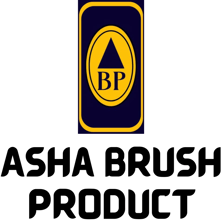Enjoy exclusive quality on premium brushes!
The Essential Role of FRP Brushes in the Aerospace and Aviation Industry
The aerospace and aviation industry requires precise and efficient maintenance to ensure the safety and performance of aircraft. Every component, from the fuselage to the jet engine, must be cleaned and maintained to the highest standards. One of the most reliable tools used in aviation maintenance is the FRP (Fiber Reinforced Plastic) brush, which offers durability, corrosion resistance, and precision cleaning. These brushes play a crucial role in aircraft upkeep, ensuring optimal efficiency, safety, and longevity.
FRP FIBERGLASS BRUSH
ASHA BRUSH PRODUCT


What is an FRP Brush?
FRP brushes are made from fiber-reinforced plastic, a lightweight and strong material designed to withstand extreme conditions. Unlike traditional metal brushes, FRP brushes do not corrode, spark, or cause surface damage, making them ideal for aerospace and aviation applications. Their non-conductive properties make them especially valuable in environments where electrical safety is critical.
Uses of FRP Brushes in Aerospace and Aviation Maintenance
1. Cleaning Aircraft Surfaces and Fuselage
Aircraft exteriors are exposed to dust, fuel residues, and harsh weather conditions. FRP brushes help remove grime, ensuring a clean and aerodynamic surface. This improves fuel efficiency and reduces drag during flight.
2. Maintenance of Jet Engine Components
Jet engines accumulate carbon deposits, dust, and grease, which can affect performance. FRP brushes allow for precision cleaning of turbine blades, fan components, and exhaust nozzles without causing damage.
3. Landing Gear and Undercarriage Cleaning
The landing gear is exposed to hydraulic fluid leaks, dirt, and debris, which can lead to mechanical issues if not properly maintained. FRP brushes effectively scrub off contaminants, ensuring smooth and safe landings.
4. Cleaning Aircraft Interiors and Cockpit Equipment
Inside the aircraft, FRP brushes help remove dust, lint, and debris from cockpit instruments, seats, and panels without scratching delicate surfaces. Their non-conductive nature makes them ideal for use around electronic systems.
5. Preventing Corrosion and Wear on Aerospace Parts
Aircraft components are subjected to extreme conditions, including high altitudes, temperature variations, and moisture exposure. FRP brushes help clean and maintain these parts, reducing the risk of corrosion and increasing durability.
Advantages of Using FRP Brushes in Aerospace and Aviation
✔ Non-Corrosive: FRP brushes do not rust, making them ideal for high-humidity environments.
✔ Lightweight and Durable: Their high strength-to-weight ratio makes them easy to handle and long-lasting.
✔ Non-Sparking and Safe: Essential for use in fuel-sensitive areas and electrical components.
✔ Gentle on Surfaces: Cleans effectively without scratching delicate aircraft materials.
✔ Eco-Friendly: Reduces the need for harsh chemical cleaners, supporting sustainable aviation practices.
Conclusion
The use of FRP brushes in the aerospace and aviation industry is essential for ensuring safety, efficiency, and longevity in aircraft maintenance. Their durability, lightweight design, and non-corrosive properties make them a critical tool for cleaning everything from jet engines to landing gear. By integrating FRP brushes into routine maintenance, airlines and aerospace engineers can enhance performance, reduce maintenance costs, and extend the lifespan of aircraft components.
For aviation professionals committed to precision, safety, and efficiency, FRP brushes are an indispensable tool in keeping aircraft flight-ready and operating at peak performance.
